We recently wrote an article on sticking points that occur in lifts – basically, where people tend to fail in a lift. Did you know that there are also sticking points in metcons? It’s true! Ever get to a point in a workout where you find that you’re forced to take a break, and you stand there huffing and puffing with your hands on your knees? Sticking point. Or, in an interval WOD, have you noticed that your penultimate round is the slowest? Also a sticking point. So, what causes them, and how can we overcome them? To understand it, we must first quickly review some terms.
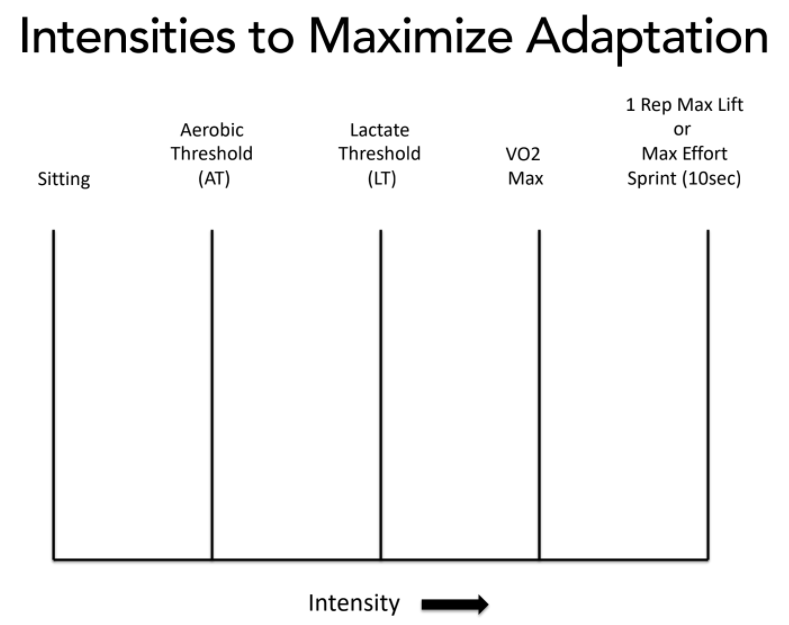
VO2 Max – This is the maximum amount of oxygen your body can consume during exercise.
- Upper limit is determined by genetics
- The unit of measure is a function of bodyweight, so the lighter you are, the higher your VO2 Max can be.
- Can be trained and improved through high intensity workouts like yesterday’s couplet.
- Movement specific; you can have different maxes for running, rowing, biking, etc.
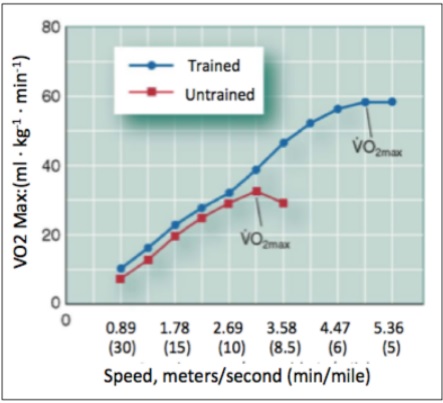
Lactate Threshold – This is your maximum sustainable pace.
- Exceeding this pace means your cells are producing waste (lactate) faster than they can clear it.
- You can function beyond this point temporarily. Slowing down will bring you back under the threshold. Functioning too far beyond it, staying beyond iit for too long will force you to stop (sticking point!)
- Can be trained to move it closer to your VO2 Max through high intensity intervals with incomplete rest.
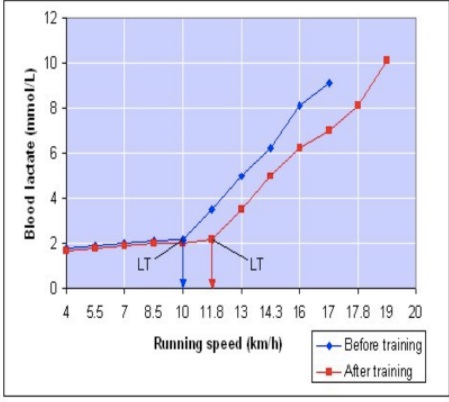
Aerobic Threshold – This is the point where movement crosses from recovery into aerobic exercise (aka steady state cardio).
- Breathing is slightly elevated, but still conversational
- Can be sustained for long periods of time
- Developing your aerobic base makes it easier to clear lactate from your system.
You may have noticed that in defining these terms, we uncovered one cause of sticking points – crossing the lactate threshold. What is lactate, and what causes it to build? If you’ll indulge me a little longer, we need to quickly review energy systems and muscle fiber types.
Phosphagen System:
- Lasts up to 10-12 seconds
- Uses creatine phosphate as a fuel source
- Fuels Type 2B (fast twitch) muscle fibers
- First system to burn out during exercise
- Burns clean! No waste
- Does not require oxygen
Glycolytic System:
- Used after phosphagen burns out if the aerobic system isn’t warm, or when the lactate threshold is crossed.
- Fuels Type 2A (quick twitch) muscle fibers
- Burns glucose and creates pyruvate and H+ ions. Without the presence of oxygen, the H+ ions make your muscles burn.
- When H+ and pyruvate bond, they form lactate, which can be used as a fuel source.
Oxidative System:
- Fuels Type 1 (slow twitch) muscle fibers
- Requires the use of oxygen
- Can use lactate as a fuel source
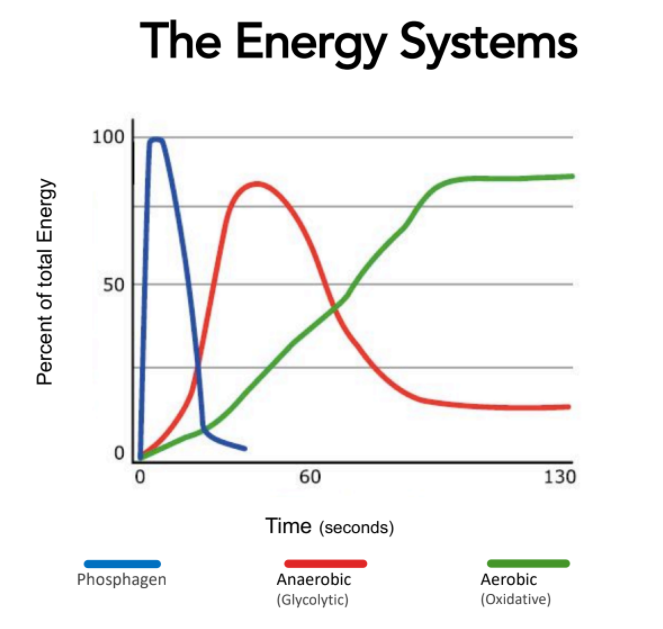
Okay, done with all the jargon. The gist of this – using type 2 fibers and the glycolytic system creates lactate. Using type 1 fibers and the oxidative system clears lactate. When you have more lactate in your system than you’re able to clear, you hit a sticking point. This is either in the form of muscular failure, or systemic fatigue (wind/heart rate skyrocketing). We can operate above the lactate threshold for a period of time, but eventually you’re going to get stuck.
Great, now how do we improve our lactate threshold? From a muscular stamina standpoint, we need to improve the ability of our type 1 muscle fibers. Max effort and heavy lifts train our type 2 fibers. BUT, the stronger we are, theoretically, the more weight we can move without recruiting type 2 fibers. If I can hit a 200 lbs thruster, I should be able to move 95 lbs at a steady pace fairly easily. If you increase the weight you’re able to move slowly, you improve your type 1 fibers, and you can clear lactate with heavier weights.
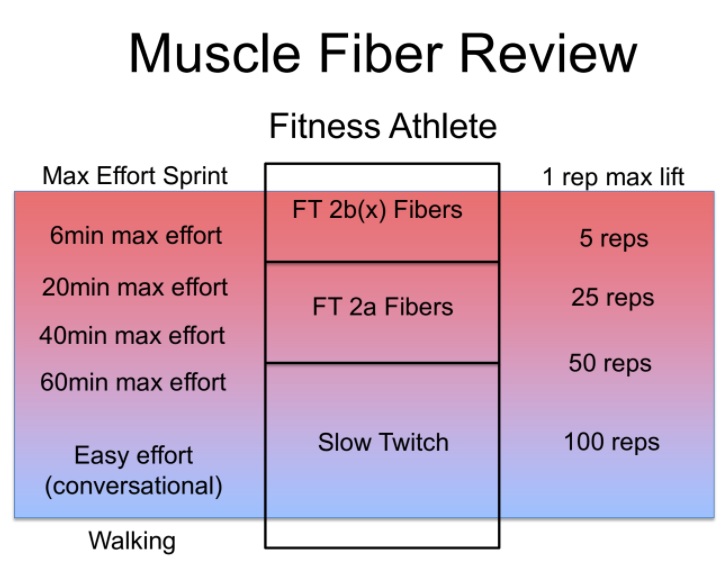
From a conditioning standpoint, we need to push when it’s time to push. When we perform high intensity intervals with incomplete rest, it’s tempting to quit. Quitting just reinforces the habit of quitting. Pushing through boosts your lactate threshold, and helps you get comfortable being uncomfortable. Both are important.
The other reason we hit sticking points is purely mental. If we train ONLY in our comfort zones, we don’t know how to deal with discomfort. If you’re expecting a workout to be easy, and it’s not, your brain starts to panic. This mismatch of expectation vs. reality is the other cause of sticking points. Our coaches do a great job of explaining the intent of workouts, how they should feel, and helping our members come up with strategies for making it through. Managing your expectations, sticking to strategy, and expecting discomfort is how you can push through these sticking points.
So, to summarize: we hit sticking points in metcons when we cross our lactate threshold and stay there for too long. And, we hit them when we’re not properly prepared for the difficulty of a workout, and we have a mismatch between our expectations and reality. In both cases, we panic, and we’re forced to slow down or stop. By improving our aerobic system and type 1 fibers, we can improve recovery. By pushing hard when we’re supposed to push hard, we can increase our lactate threshold. Doing both will allow us to push harder, and recover from the effort faster, meaning that we can repeat that hard effort with less downtime. So, listen to your coaches, and make sure you’re tackling each workout as intended. See you in the gym.
By Erik Castiglione
